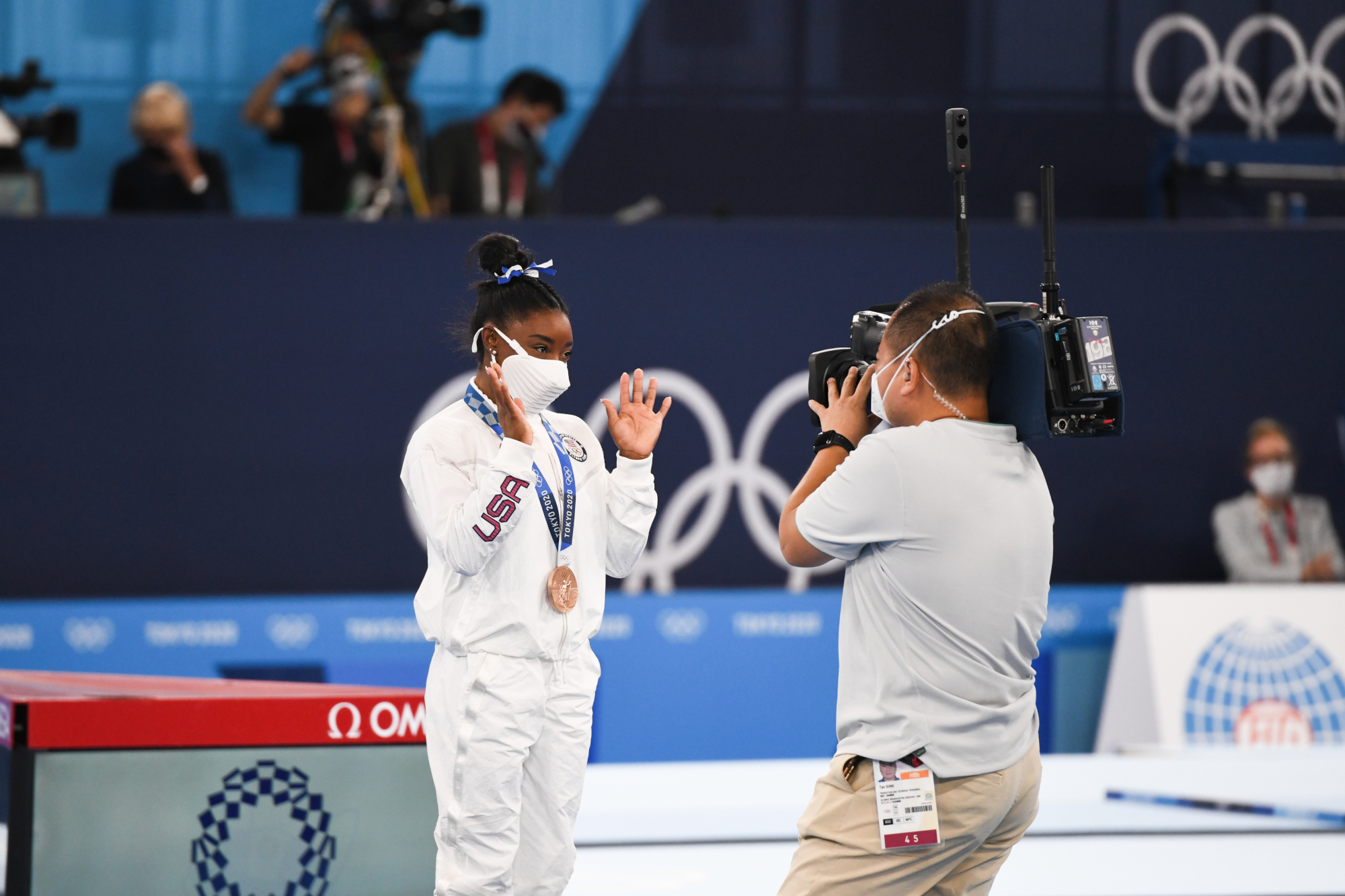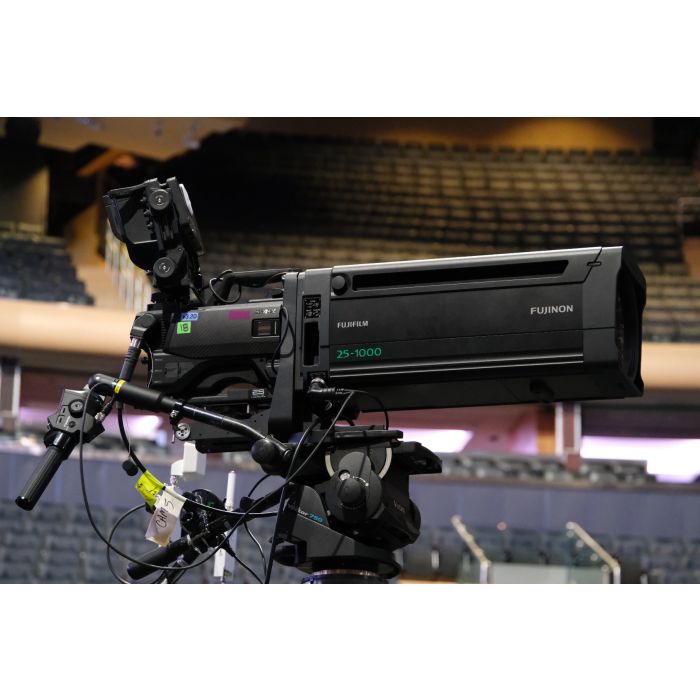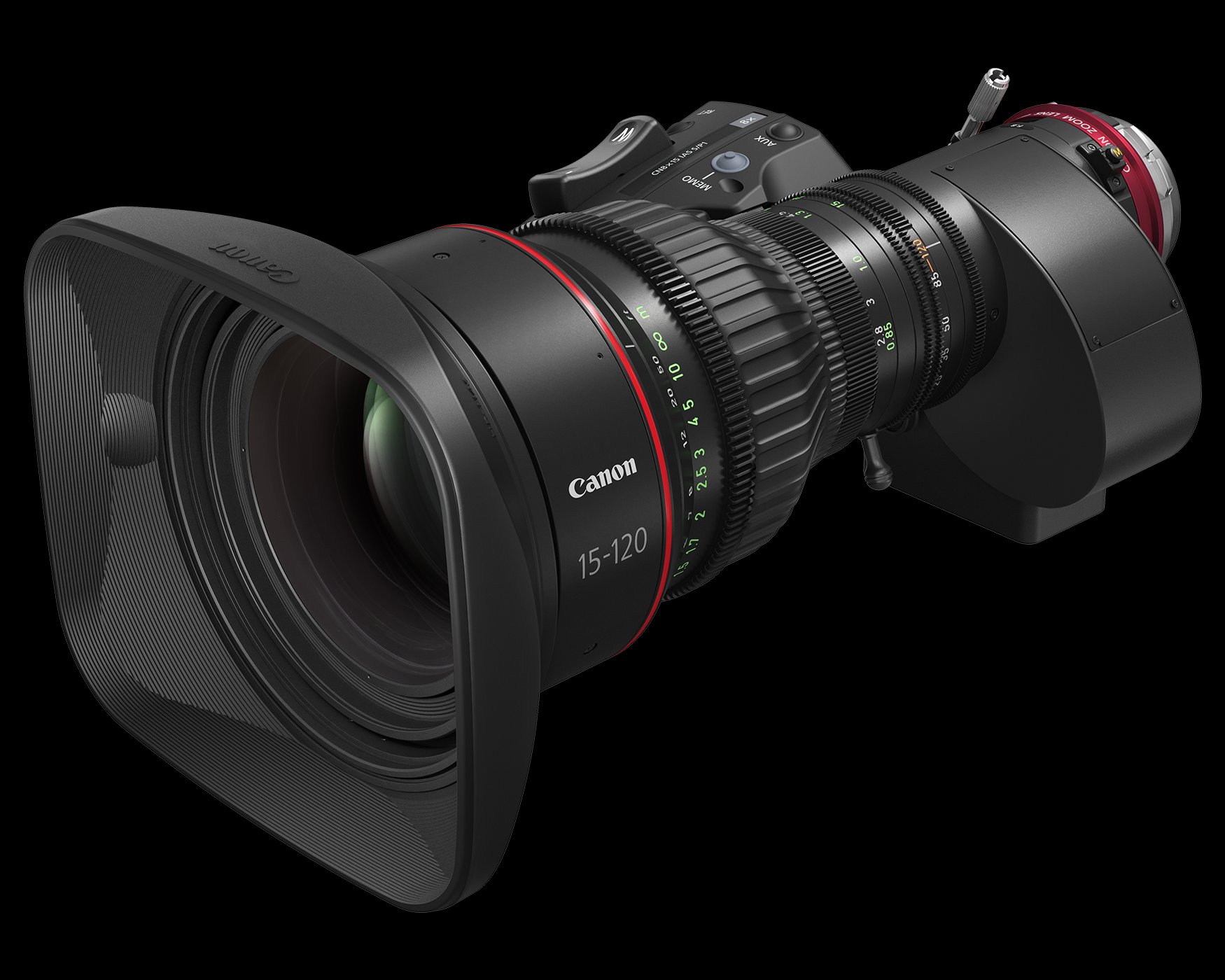Cinematic: Blurring the Lines Between Live Sports and Hollywood
Demand continues to grow for the 'cinema look' on the field and in the venue

Broadcast lens makers have long worked to marching orders from large venue live sports and concert producers wanting longer and (still) longer focal length telephoto zoom lenses. This year the camera at the center field fence can frame a head and shoulders shot of the batter; next year it will inch in a bit to a head only shot.
But now those lens makers are hearing a second voice. It’s asking them for a more cinematic look, not to replace the mega-telephoto zooms, but for use on the sidelines and locker rooms.
There are a number of elements to that cinema look. The most easily identifiable is a shallow depth of field. At the risk of oversimplification, depth of field in still or motion picture photography is the distance between the nearest and the furthest objects that are in acceptably sharp focus in an image captured with a camera. The more shallow the depth of field, the less of the image is in focus, and the more is out of focus.
This shallow depth of field has long been the province of photography and motion pictures, where it is said to be eye catching. But now it no longer is just restricted to pros—with average consumers using the “profile” feature on their smartphones, even the average joe understands its appeal.
How to Do It
There are three ways to reduce the lens’ depth of field:
- Increase the image sensor size
- Increase the iris setting, the f-stop
- Increase the lens focal length
Most live sports cameras and lenses utilize B4 mount lenses, with -inch three-chip prism sensors. Most cinema cameras and lenses utilize PL mounts, which have larger image sensors than the B4 mounts, and thus deliver a more shallow depth of field.
Opening the lens’ iris setting will also shallow the depth of field. In order to keep the light level even it may be necessary to deploy neutral density filters in the camera. Shutter speed can also be used to limit the light hitting the sensor, but can also yield unwanted effects.
The professional video industry's #1 source for news, trends and product and tech information. Sign up below.
To shallow the depth of field by increasing focal length, a prime lens can be switched out with a higher focal length lens, or zooming the lens can achieve the same result. For a production moving fast and furious, a zoom lens is preferred.
“Over the last series of years, be it sports or other live events, concerts, generally multicam, we’ve seen a desire to create that cinematic look,” said Stosh Durbacz, national sales manager, Optical Devices Division, Fujifilm North America Corporation.
At the 2023 NAB Show, Fujifilm introduced its Fujinon Duvo HZK25-1000 box lens, which deploys a dual-format system that supports two single sensor sizes: a large format sensor size and a traditional super 35mm sensor.
“Our customers helped us identify a very clear need for a long and fast cinema lens that can produce cinematic results in a live production environment,” said Durbacz. Fujifilm’s newly developed 1.5x expander shifts the focal length of the telephoto side, enabling super-telephoto image capture of 1500mm (1000×1.5).
Bokeh is another lens attribute that yields a cinematic look. Bokeh is the aesthetic quality of the blur produced in out-of-focus parts of an image.
There are several characteristics that impact bokeh, said Art Adams, product specialist, Cinema Lenses at ARRI. “But the most important is spherical aberration: do light rays from the edge of the lens focus at the same point as light rays from the center of the lens? ARRI lenses are very well corrected for spherical aberration and this produces backgrounds that are incredibly smooth. Subjects pop out of out-of-focus backgrounds as there are no residual hard edges to draw the eye away.”
Adams pointed to ARRI’s 65-300 Signature Zoom as the most useful for live sports. “It is exceptional because it doesn’t exposure-ramp at the end of the zoom range: when you start your zoom at T2.8 at 65mm, you’ll end your zoom at T2.8 at 300mm. That lens ships with a 1.7x extender at no extra charge, and that turns this lens into a very high quality 110mm-510mm T4.9.”
Ergonomic Hurdles
There are a lot of technical hurdles to developing lenses that provide the cinematic look. But there are ergonomics factors as well.
In cinema production, there may be four or five different operators working around the cinema camera. On a broadcast crew, you have one operator for each camera.
“This is largely because when they’re making a video, making a movie, they’re not beholden to the action head of them,” said Mark Weir, senior product manager, Alpha Cameras & Lenses, Sony Electronics. “They can have as many takes as they want because the actors and what’s happening are under the control of the production, they’re not taking images that are happening in front of them. They’re literally making them, they’re crafting them, they’re organizing them, they’re structuring them to fit their requirements.“
Weir notes that the technology for the cinematic look is in its infancy. “It doesn’t cover everything in the world of broadcast sports, for example,” he said. “You’ve got to deliver the kind of reach to cover action 100 yards away. Trying to then cover it in shallow depth of field is probably not what the production is looking for. It’s a balance of both.”
As the depth of field becomes more and more shallow, keeping the lens focused on the action becomes more difficult.
“The challenge is knowing where to point that auto focus,” said Josh Stoner, senior specialist, Product Management Team, Broadcast and Cinema Lenses for Canon. ”The trick is how to make it react so you’re not catching someone out of frame, like somebody coming into the frame and then the focus jumping to that person. That’s more of an operator function to learn how to do that. It’s less about learning where to point the autofocus, when to engage it and when not to engage it.”
Stoner said picking a lens for a cinematic look depends on which cameras utilized. “If they’re using a stubby camera and they have a whole rig built up around it, I’m going to suggest one of our CINE-SERVO, the 70 to 120, which is going to give you a kind of a wide angle look,” he said. “If they’re going to run around on a gimbal, with a C370, I’m going to go with one of our RF lenses to give you autofocus and lightweight capability so you can run around with it.”
With host broadcaster Olympic Broadcasting Service recently announcing that it will be using cinematic lenses for the first time at the 2024 Games in Paris, expect to see an overload of the cinematic look next summer. Which seems appropriate when you consider the French invented cinema.



